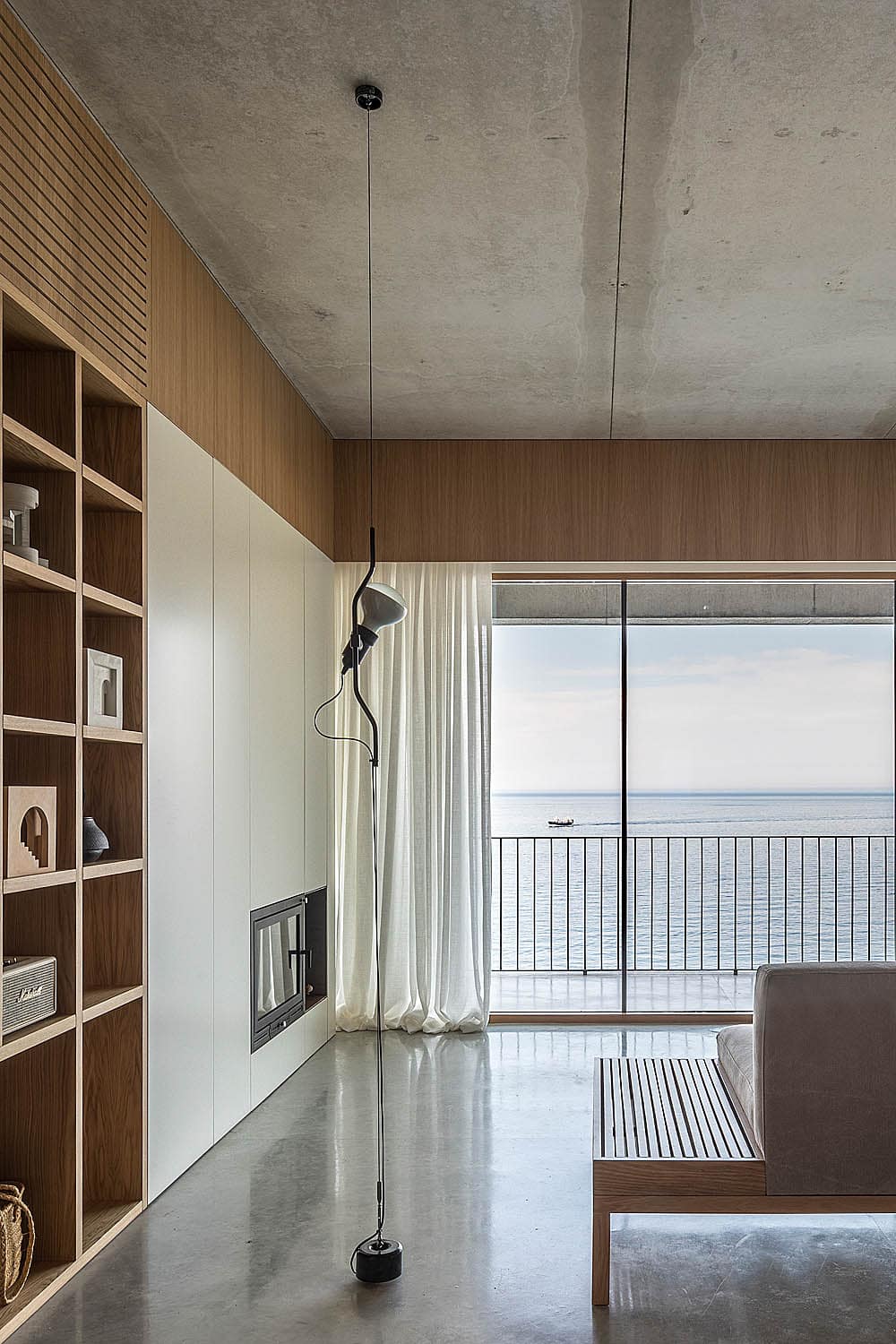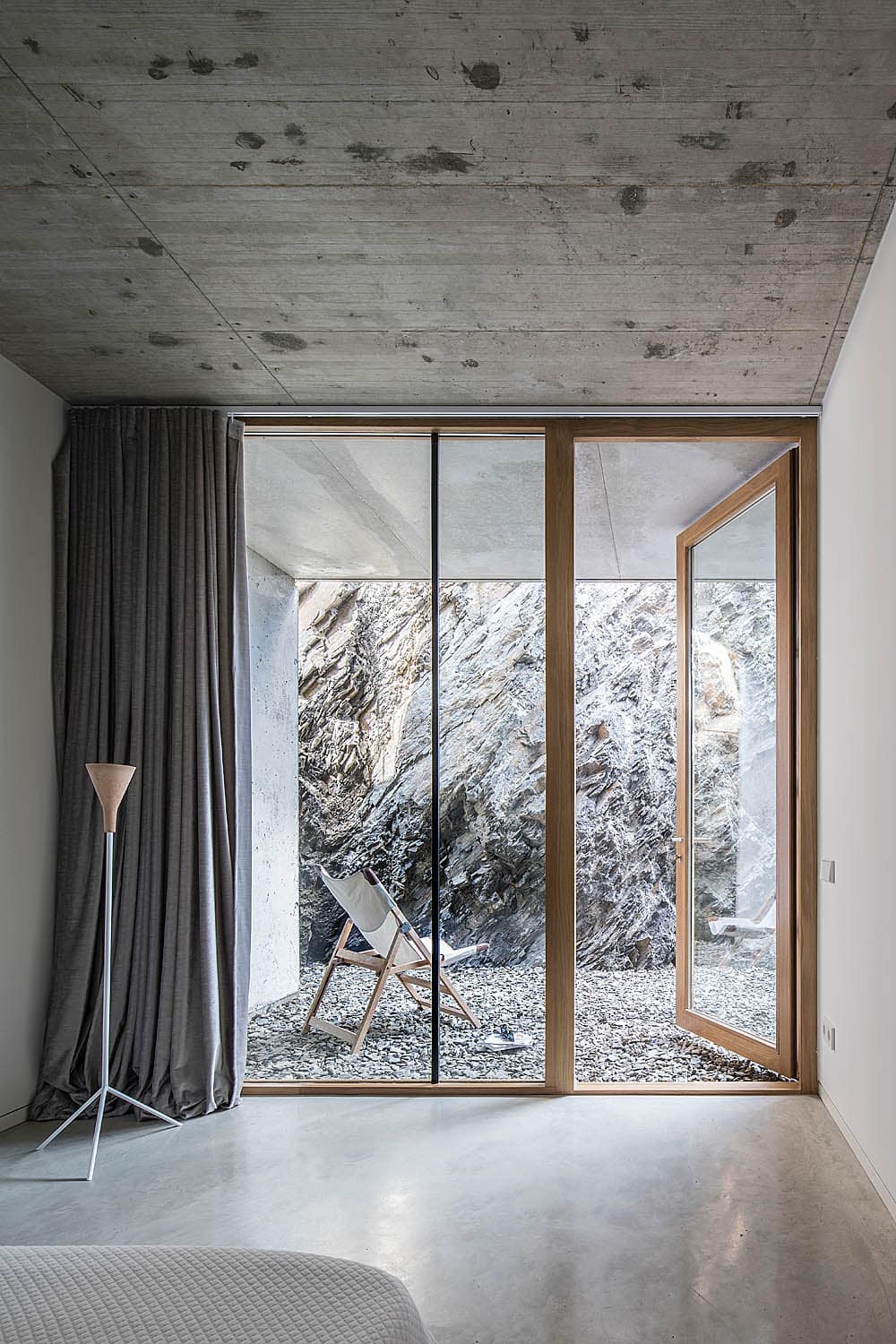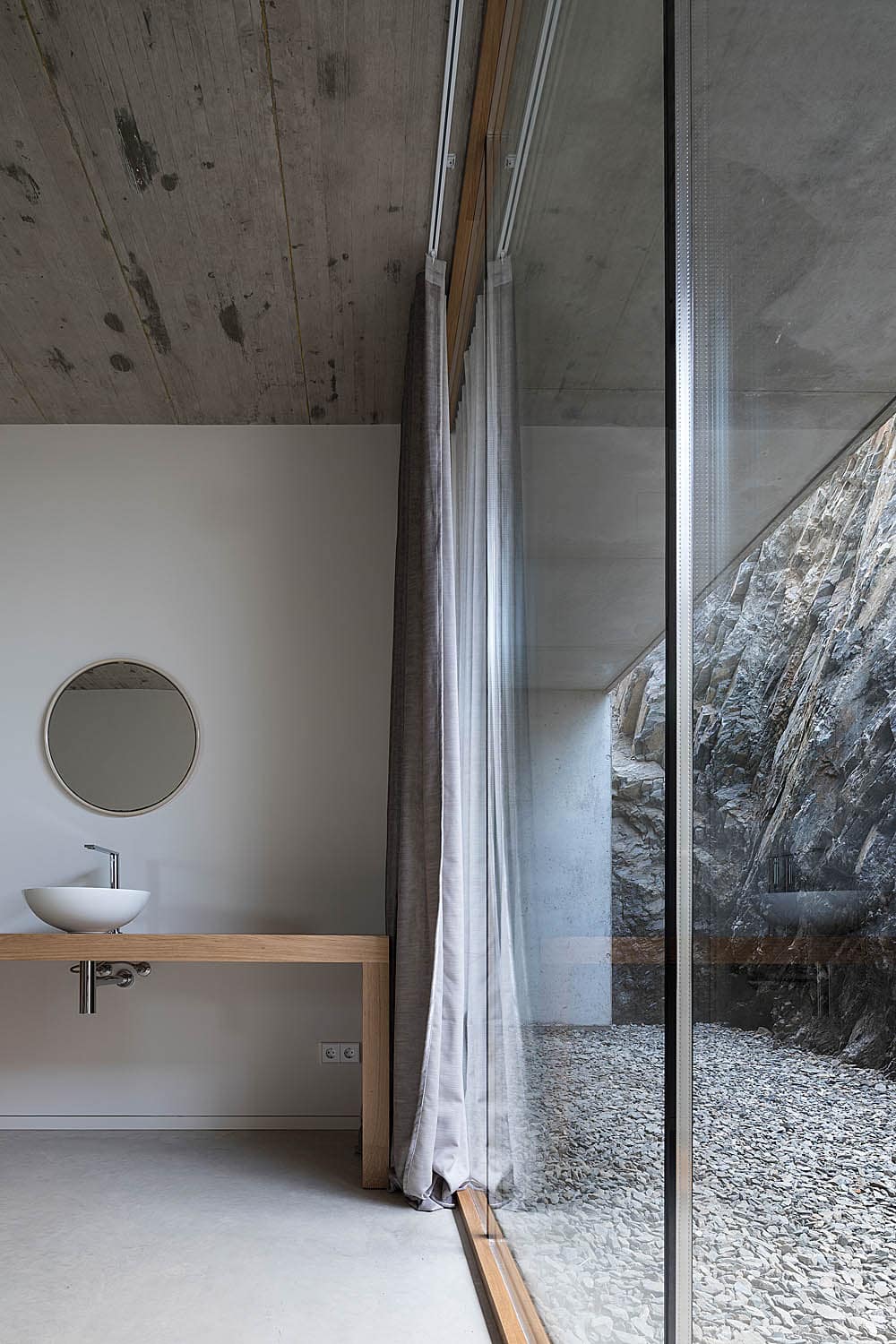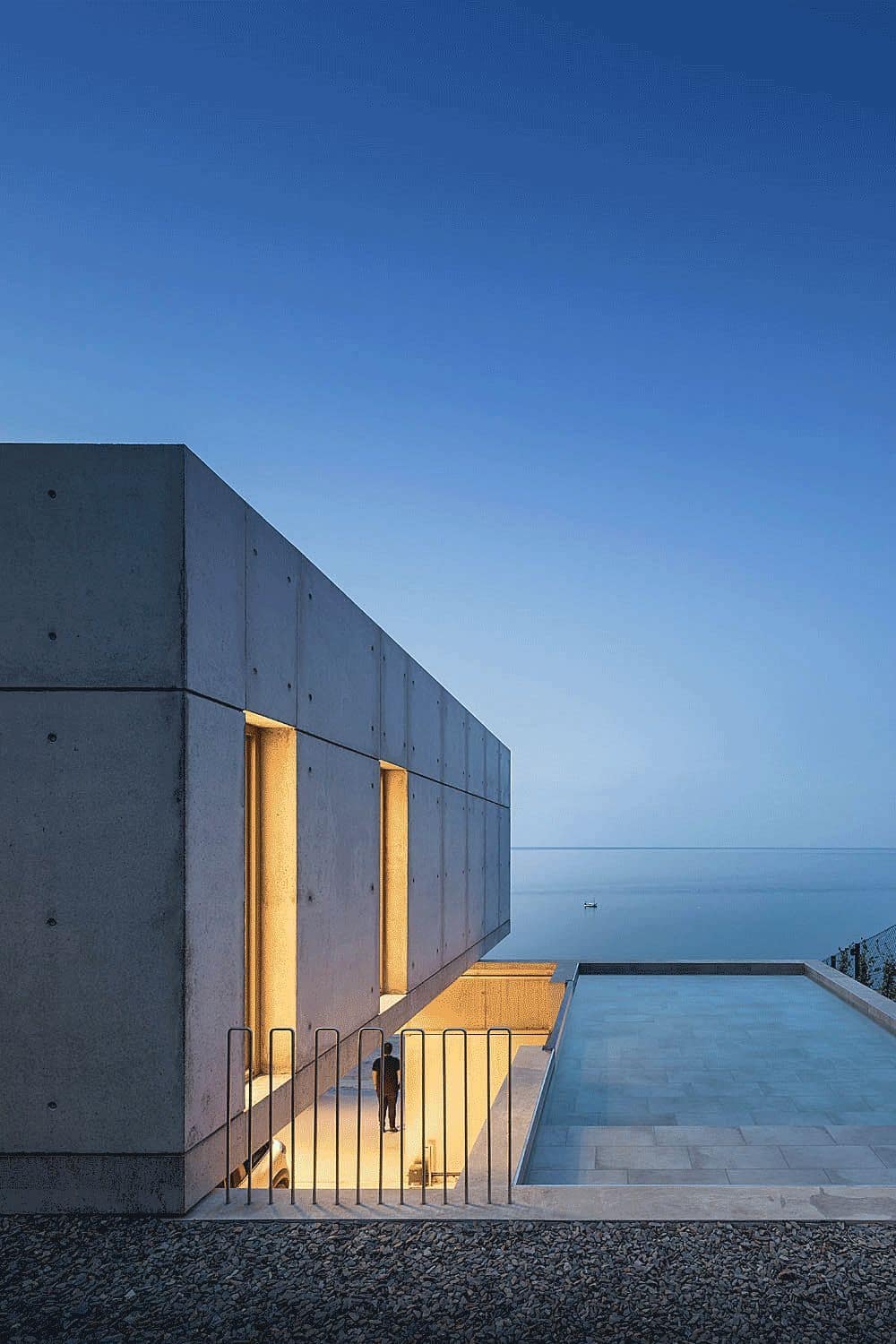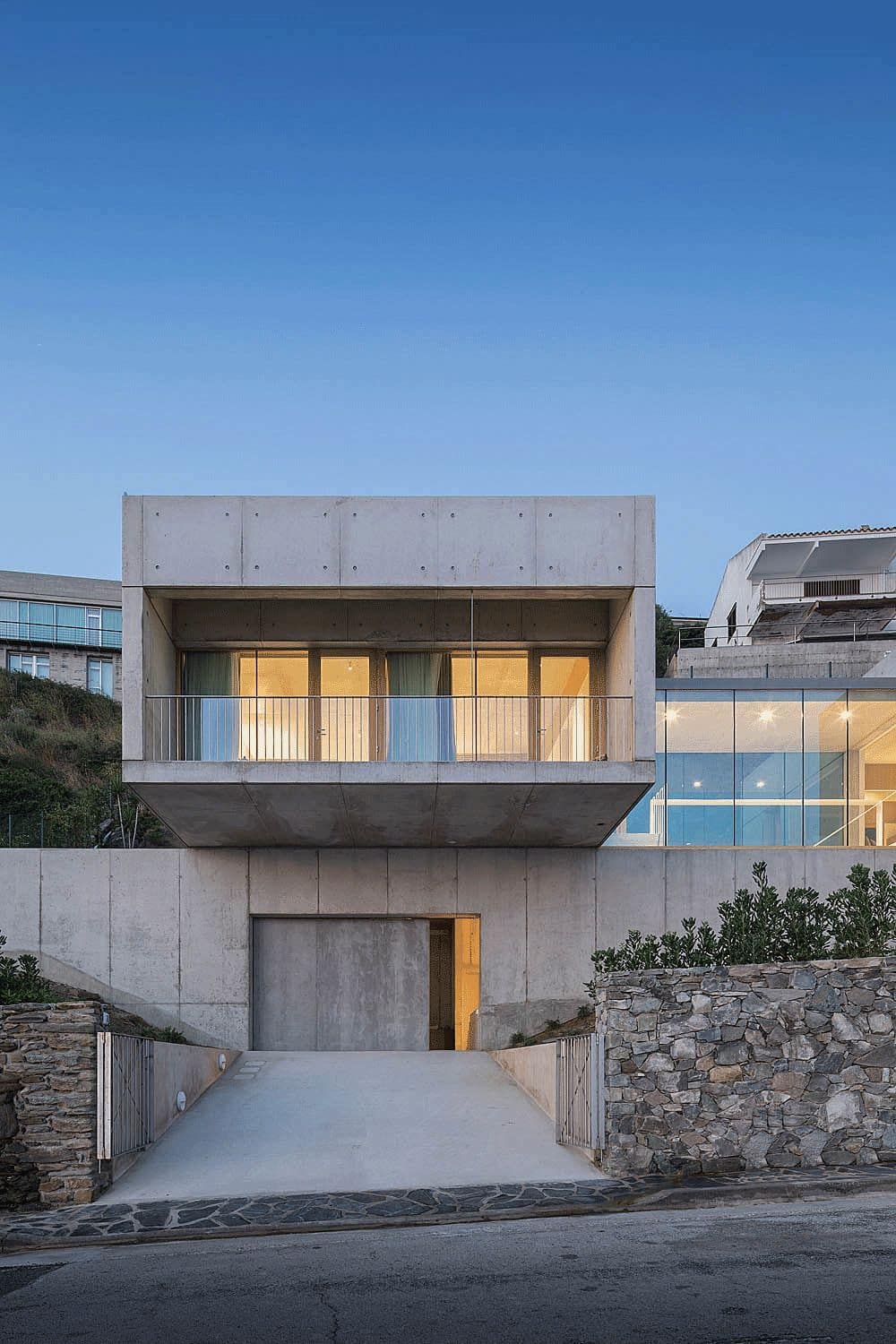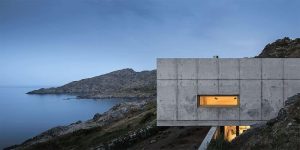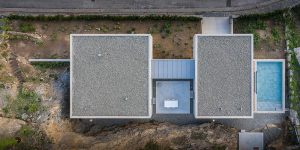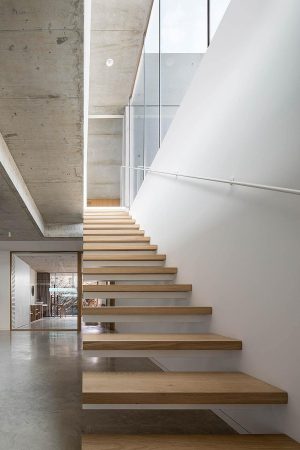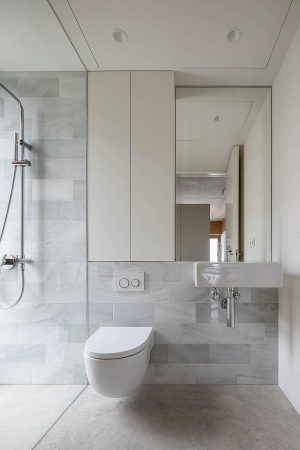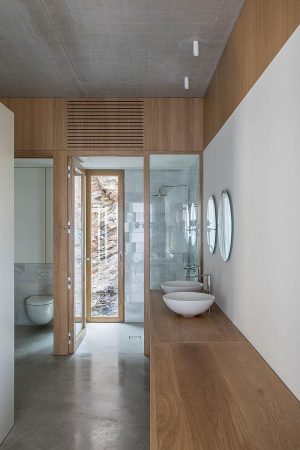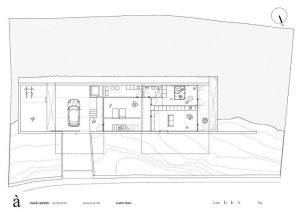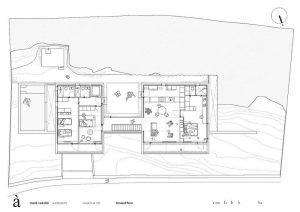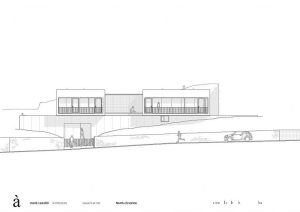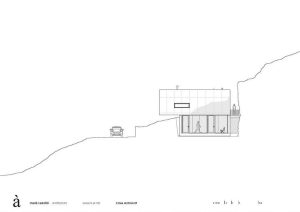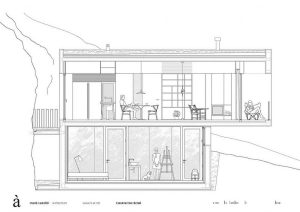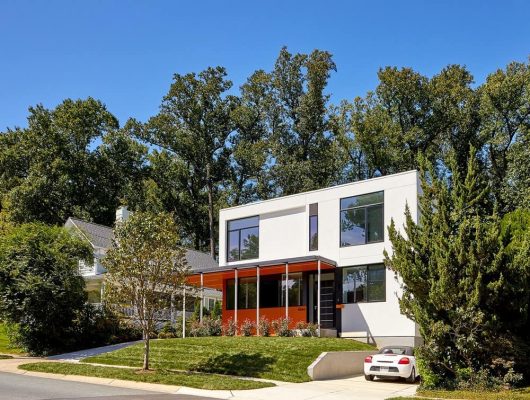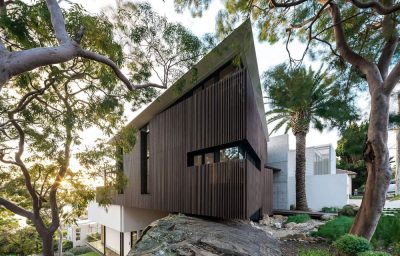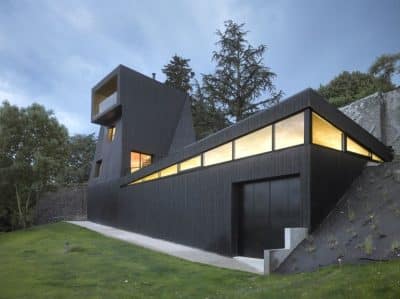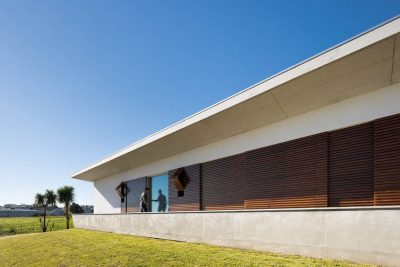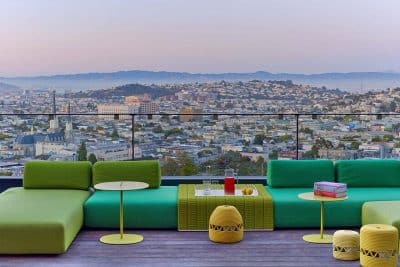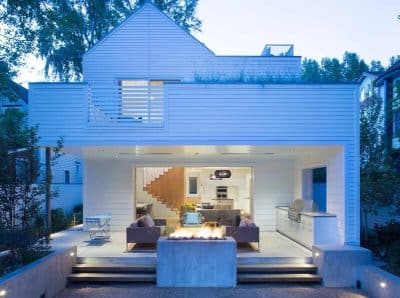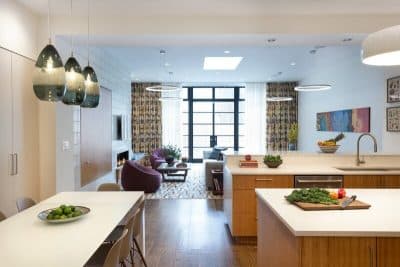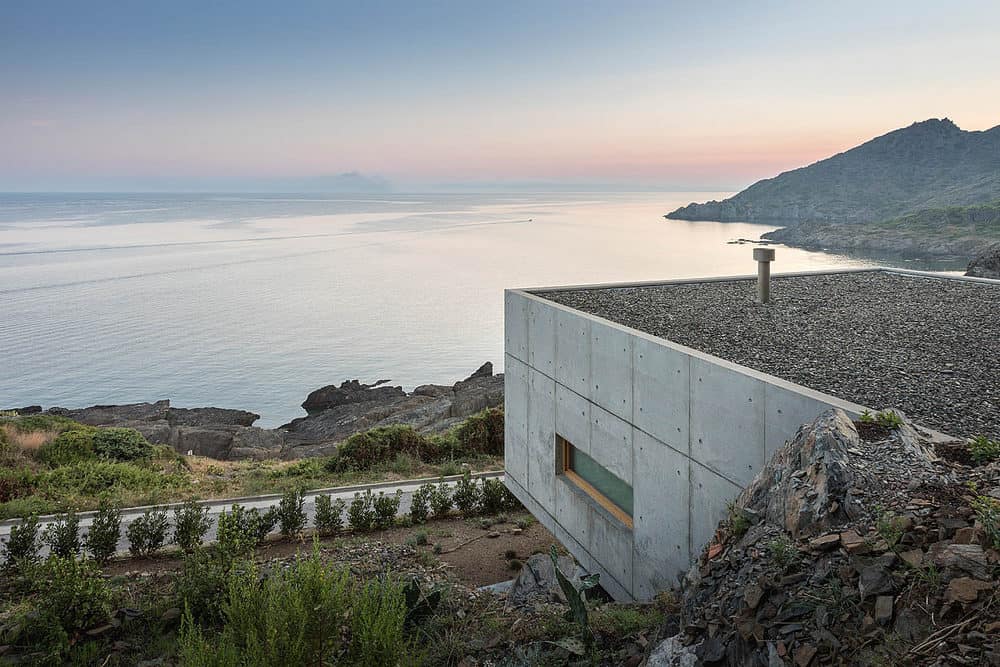
Project: Punta Creu House
Architects: José Antonio Molina, Marià Castelló Martínez
Construction Management: José Antonio Molina, Lorena Ruzafa, Marià Castelló
Design Team: Lorena Ruzafa, Marga Ferrer
Technical Architect: Joan Noguer
Structure: Think Enginyeria SLP
Builder: Construccions Pòrfit
Location: El Port de la Selva, Spain
Area: 3337 ft2
Year 2021
Photo Credits: Marià Castelló
Port de la Selva is a small coastal settlement in the northernmost part of the Costa Brava. The intervention is located on a plot of land in the «La Tamariua» urbanization on the north slope of Puig Gros, a small promontory that surrounds and protects the town’s port.
The topography presents a pronounced slope towards the sea with abundant outcrops of «pòrfit», a dark and very hard rock that characterizes the geology of volcanic origin of the place. The climatic conditions are typical of the Mediterranean climate, although sometimes they become extreme, with strong winds from the north (Tramuntana) that frequently hit the coast.
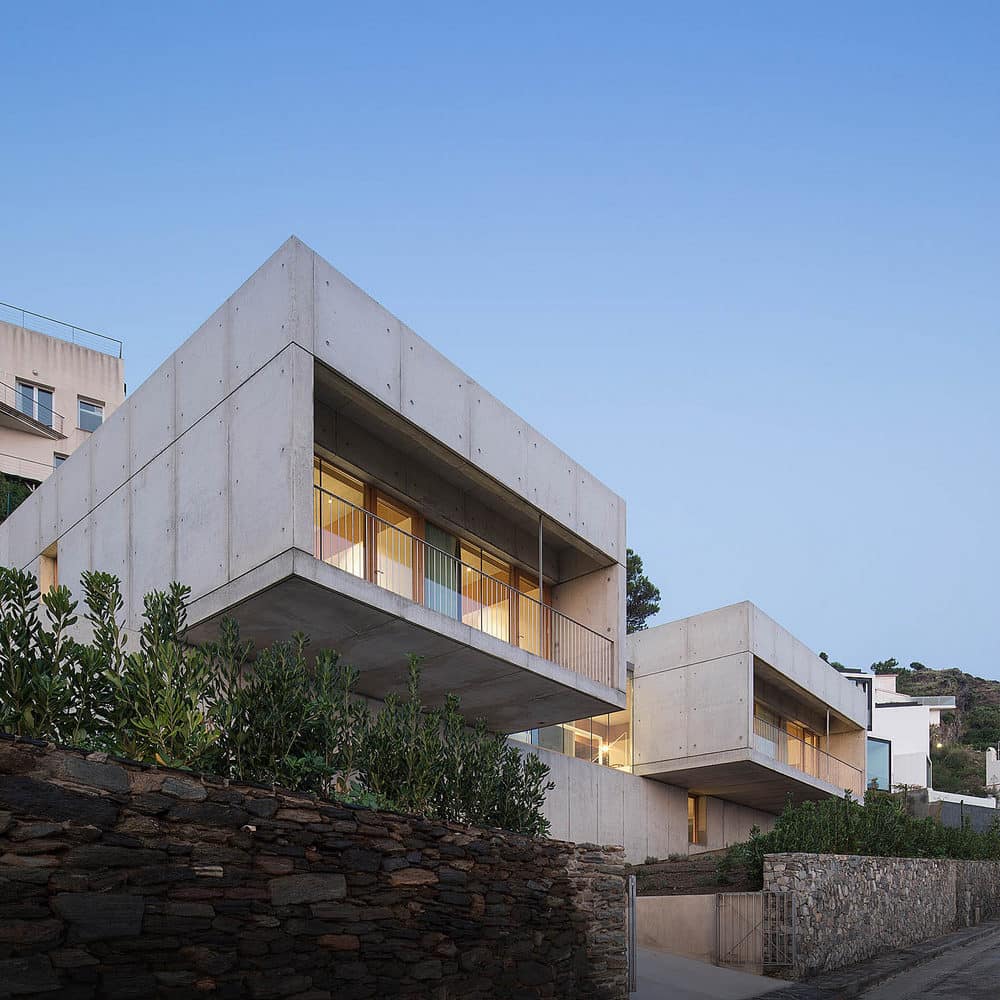
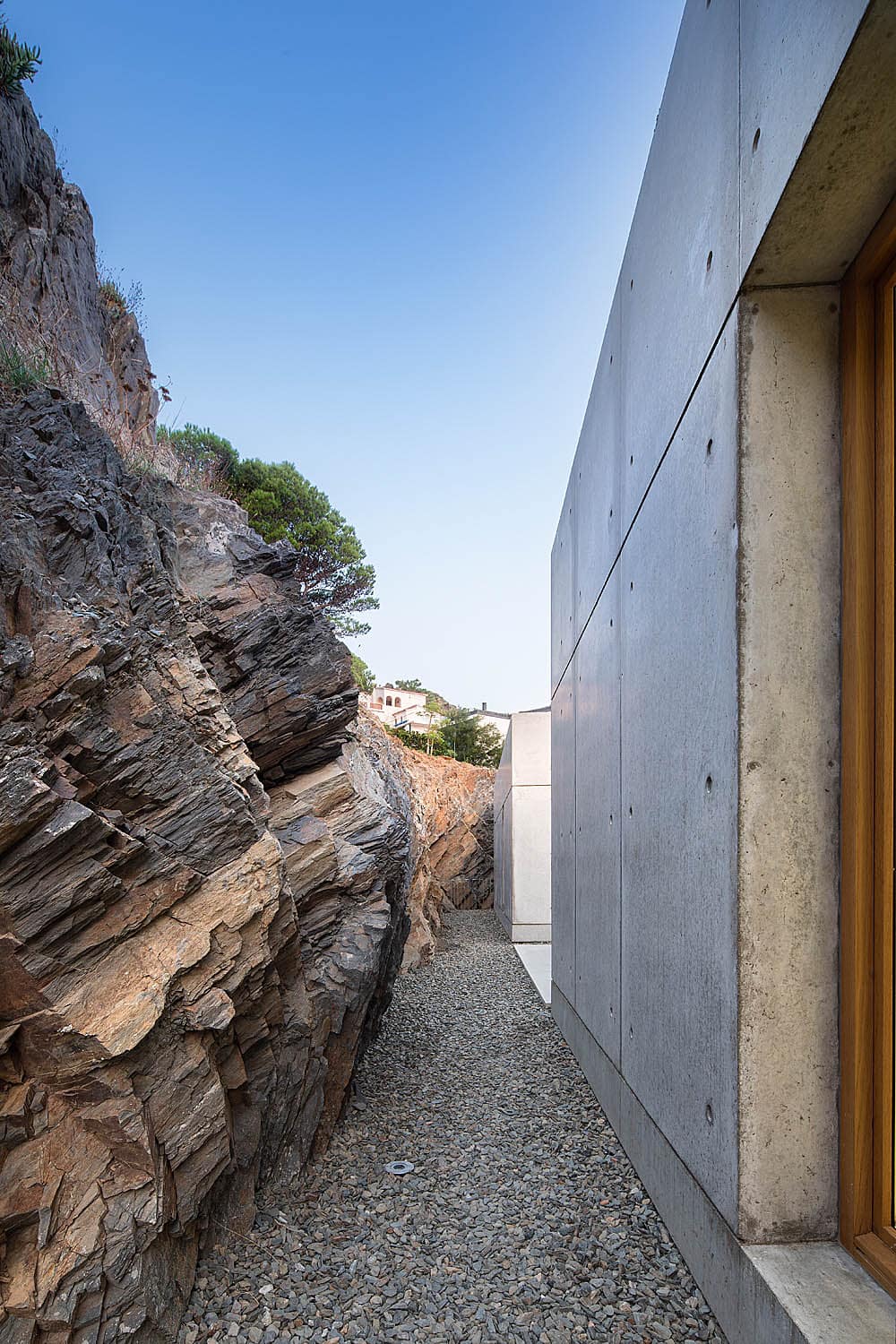
The tension between the optimal solar orientation and the deep panoramic views compresses the program of a house for a family with four children on two levels: the lower one embedded in the bedrock and the upper one, fragmented into two volumes. This combination of strategies (embedding in the ground and volumetric division) makes it possible to reduce the apparent volume of the intervention and improve its integration into the landscape, as well as generating different patios that provide warmth, lighting and ventilation at strategic points.
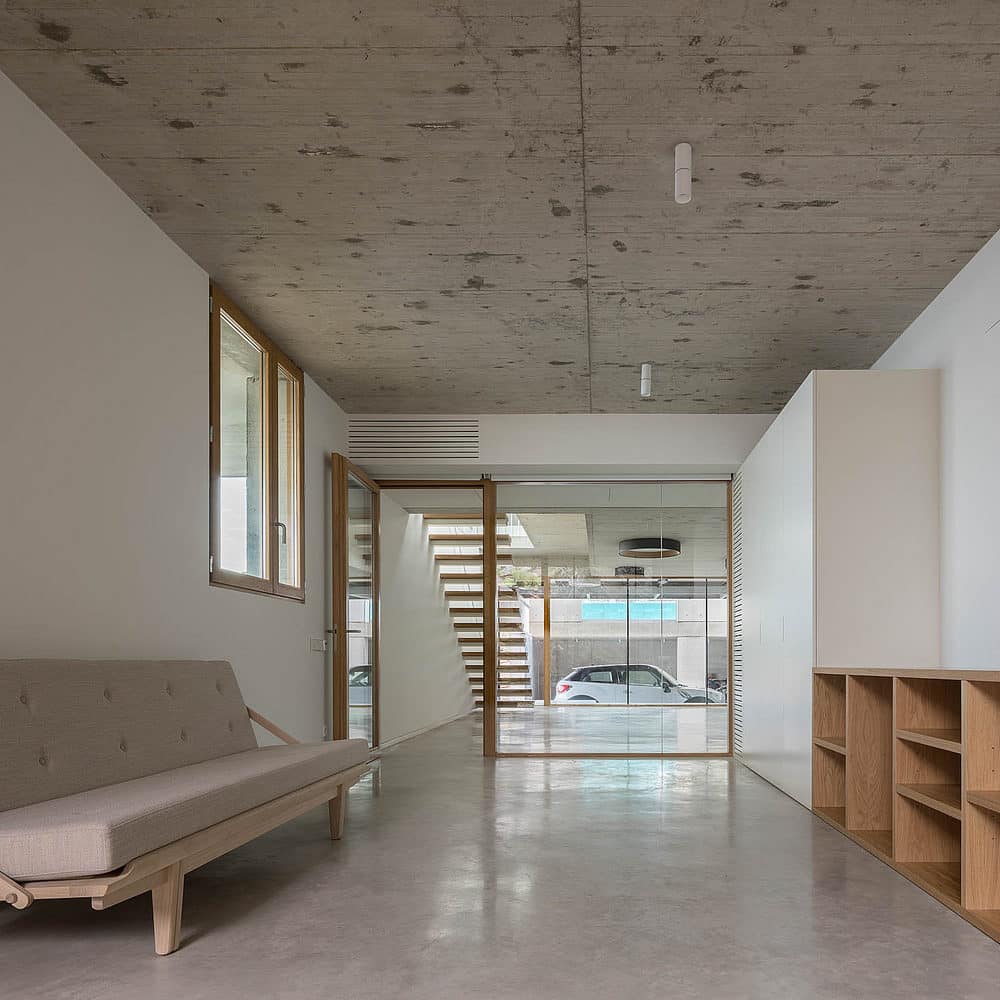
The interstices between the rocky «pòrfit» substrate and the architecture become the most lyrical moments of the proposal and where you most want to be.
While on the lower level, almost at street level, more intimate relationships with the outside are established through patios, on the upper level the two volumes open frontally to the landscape and the sea horizon. Also at the top level more introverted relationships are generated between the volumes and the rocky substrate that surrounds them. Thus, the glass nexus, which connects the two bodies and contains the vertical communication, acts as a screen against the wind and generates an exterior space sheltered from the prevailing wind but visually permeable towards the sea. This in turn is capable of receiving correct sunlight during the winter months, as it is also oriented to the south.
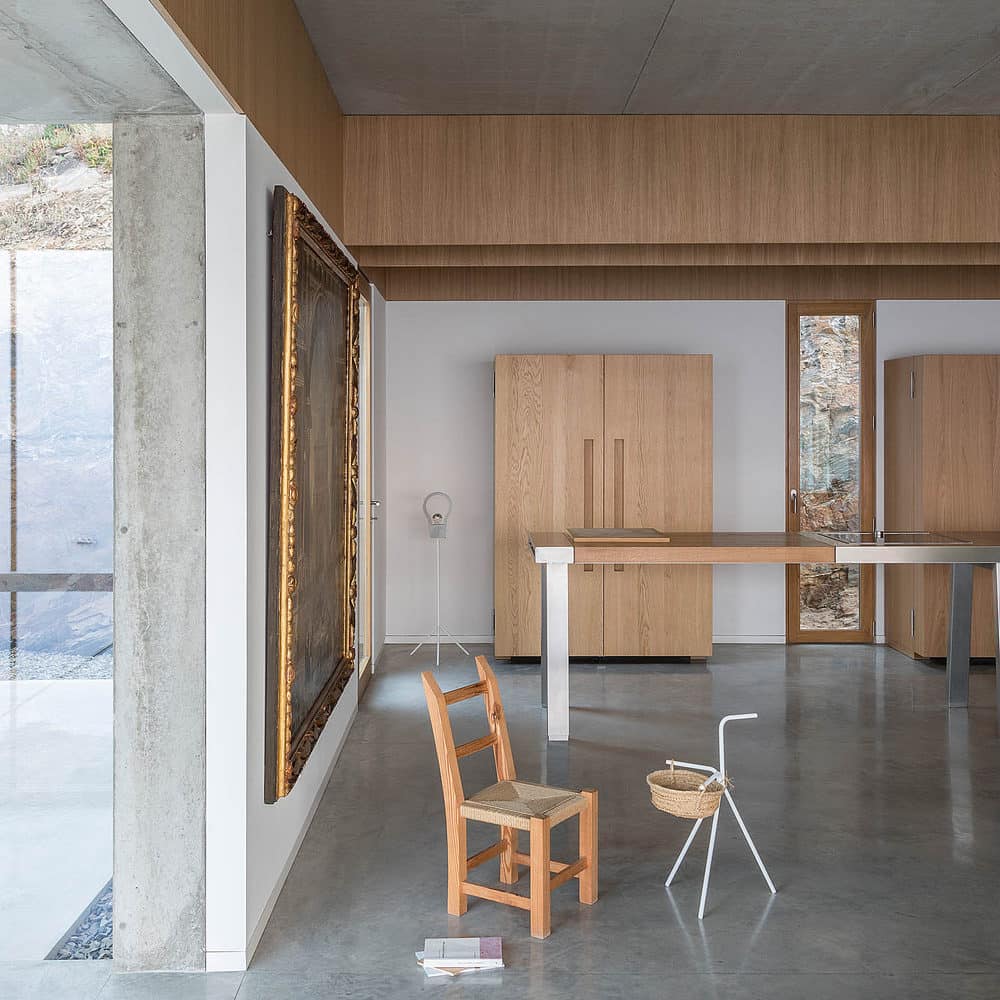
From a tectonic point of view, concrete is the predominant material both outside and inside, given that its stony nature establishes an intense dialogue with the rocky substratum of the place. Likewise, its resistance to inclement weather (strong winds and marine environment) make it one of the most durable options, with little maintenance and, therefore, more sustainable.
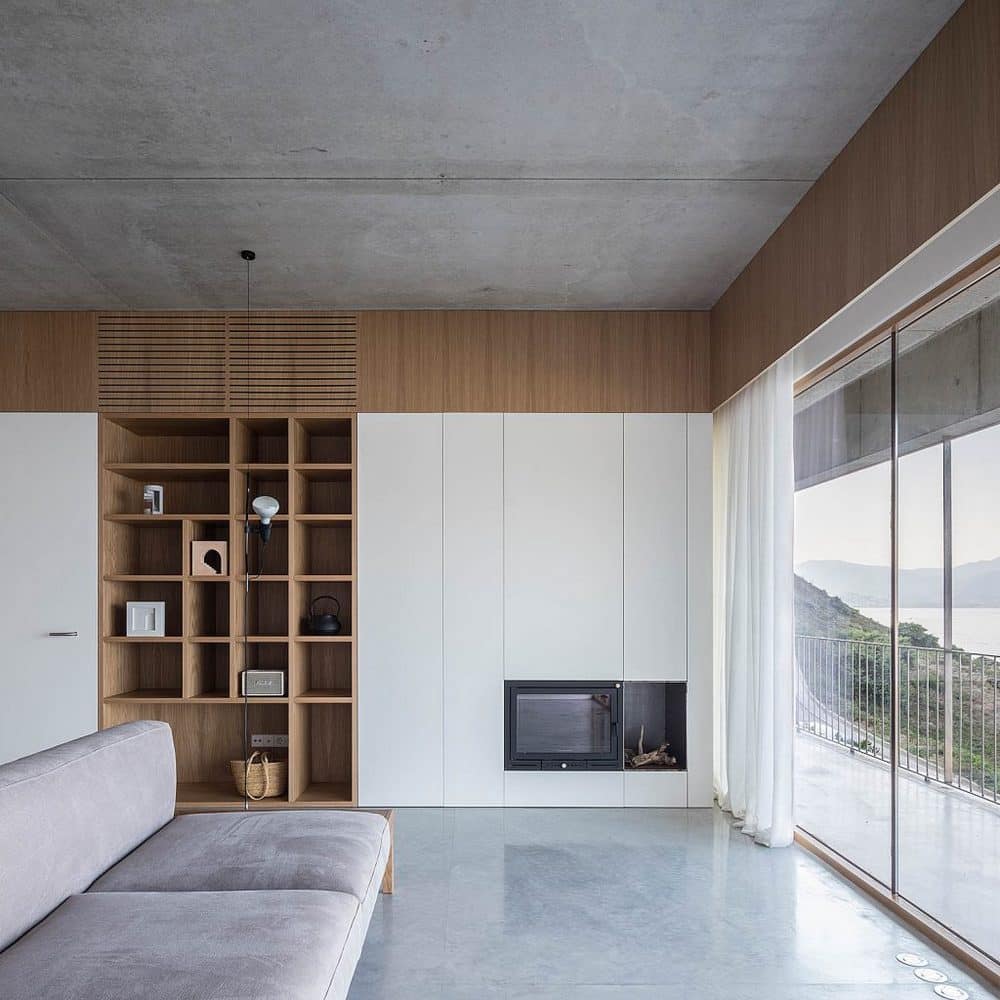
Also outside, «pòrfit» gravel from the emptying of the excavation has been used to finish the roofs and the interstitial patios between the intervention and the bedrock.
To compensate for the intrinsic qualities of concrete, oak wood has been chosen to materialize the exterior carpentry, some cladding, custom-made furniture, etc., providing the whole with warmth and harmony.
